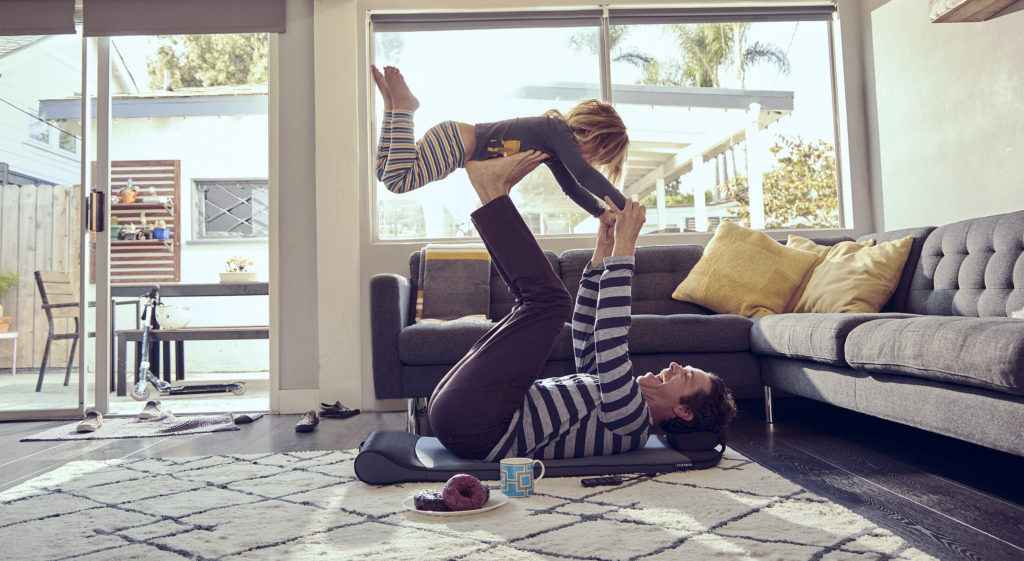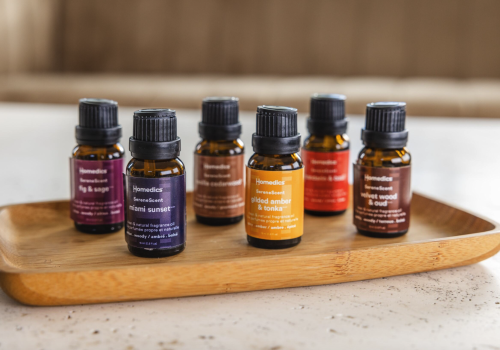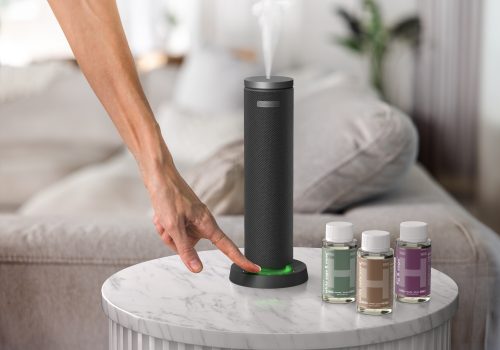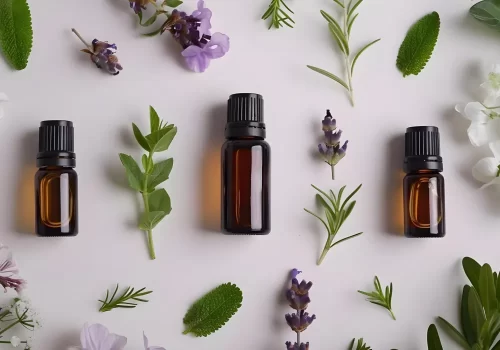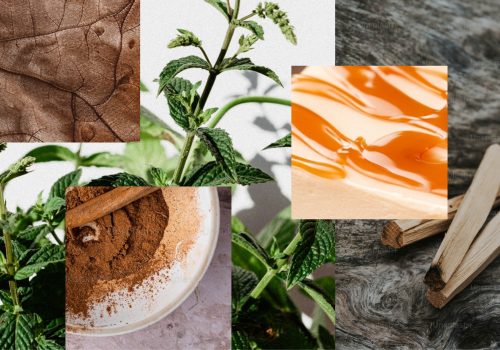Air Compression Therapy Benefits
Compression Therapy Benefits
Compression therapy might evoke the bygone days when nurses and servers donned compression stockings on their shifts, but even a quick glance at a pro athlete’s TikTok reveals the timeworn practice has come an exceptionally long way.
From compression boots to compression suits (you heard us right), modern iterations of the recovery tool have gone from outmoded to all the rage. The question is, what is compression therapy, really, and what are its advantages?
Squeeze some time out of your day to find out more about the benefits of compression therapy and why you may want to weave it into your wellness routine.
What is Compression Therapy?
Compression therapy is the act of applying controlled, targeted pressure to a particular area of the body through the use of an inflatable device, wrap, or garment.
The renewed focus on the practice may suggest that it’s only recently arrived on the scene, but the healing technique can be traced as far back as the Hippocratic era in 350 BC. Then, ancient Greeks believed that pressure could counter the “consequences” of gravity and stimulate wound healing.
While compression therapy is typically used on the lower extremities, such as your calves and ankles, it can also be applied to the:
- Shoulders
- Arms
- Hips
- Feet
Compression therapy is a cornerstone of recovery because of its capacity to improve circulation. The implications of oxygenated blood are impressive, and we’ll dive into them in just a moment.
What are the Different Types of Compression Therapy?
The most common forms of compression therapy boil down to:
- Compression socks and stockings – Sure, you might not see compression stockings as frequently as your grandparents once did, but they’re more prevalent than you might think. Compression stockings, as well as hoses and socks, have remained a mainstay in wellness, but more aesthetic styles and variations have been rolled out in the last few decades.
Compression socks and stockings are a savvy choice for those who spend a significant time sitting and standing, whether it’s due to work or traveling. They’re also popular with some pregnant women. - Compression boots – Compression boots have skyrocketed in popularity among athletes because of the widespread belief that these pneumatic devices amplify performance and enhance recovery.
- Inflatable devices – Those compression devices you may have seen “fitfluencers” tout on social media are likely powered by an inflatable device, which applies sequential pressure to specific regions of the body via an air pump. As such, some inflatable compression therapy devices, wearable and otherwise, fall under the category of “Sequential Intermittent Pneumatic Compression (SIPC) therapy.”
Inflatable devices are available in back stretching mats, wraps, pumps, pants, sleeves, and more. They can be especially beneficial for athletes, professional or not, who are seeking post-workout relief as well as anyone who wants to experience a respite from swelling and quotidian aches and pains. Inflatable devices such as sleeves may also be prescribed to people recovering from surgery, as well as those who may be at risk of blood clots. - Bandages – Bandages, as well as wraps, are another popular option in the realm of compression therapy—particularly for people who might be unable to put on stockings. These are usually made out of Velcro or elastic.
If you’re new to compression therapy, bear in mind that compression garments that exceed what’s deemed a “low” amount of pressure (or less than 20mmHg) may require a prescription from your doctor and a professional fitting.
How Does Compression Therapy Work?
That “targeted pressure” may do wonders in terms of prompting blood flow to your legs, your feet, your hips, and more.
If you spend a great deal of time sitting or standing, your circulation must wrestle with gravity to journey back to its place of origin: your heart. Compression therapy that’s exerted on your lower extremities or other areas of the body provides just enough of a squeeze to expedite blood flow and urge it to keep moving along its proper route.
You can also think of it this way: You know that delicious, revitalizing feeling that comes with legs-up-the-wall pose, or simply elevating your legs? That sense of refreshment is, in some ways, based on the same theory as compression therapy—without the gentle constriction that compression therapy offers, of course.
When is Compression Therapy Advised?
Compression therapy has evolved considerably since its first usage in Hippocrates’ time. Today, healthcare professionals may recommend compression therapy for a myriad of reasons and health conditions, such as:
- Deep-vein thrombosis (DVT)
- Chronic venous insufficiency (CVI)
- Edema (or fluid retention)
- Orthostatic hypotension
- Varicose veins
- Leg wounds
- Leg ulcers
- Burns
- Scars
The pressing question then arises: how often should you do compression therapy to reap its benefits? Well, the frequency can vary based on individual needs and the specific condition being addressed. That said, you don’t necessarily need to have a physical complication—nor do you need to be in a position where you’re hoping to prevent one—to reap the potential rewards of compression therapy.
What are the Benefits of Compression Therapy?
Compression therapy benefits are nearly as varied as the symptoms it might ease. The practice may achieve any of the following benefits.
Support Muscle Recovery
If you’ve recently engaged in strenuous activity, such as endurance or resistance training, it might behoove you to slide into a pair of compression socks or embrace another form of compression therapy:
- A 2019 study featured in Evidence-Based Complementary and Alternative Medicine ultimately concluded that compression tights may expedite muscle recovery in the participants’ lower extremities.
- A more recent, randomized controlled trial, whose results were published in Sports Health, found that compression therapy, coupled with “contrast” therapy (or alternating between heat and cold), may help mitigate exercise-associated muscle damage (EAMD), which, although a natural reaction to intense exercise, may cause cramping.
Alleviate Swelling
Swelling in your lower extremities may sound alarming, but it’s actually quite common. Triggered by an accumulation of fluid and/or an injury and inflammation, swelling may make itself known after:
- Traveling a long distance
- Sitting for a prolonged period
- Standing at length
- Suffering an injury
How does compression therapy help swelling? The theory is that when your leg muscles aren’t exactly flexing all that often, such as when you’re taking a cross-country train ride or convalescing after an injury, the light squeeze generated by compression garments and devices fends off blood from pooling in the legs.
Multiple studies confirm the efficacy of using compression therapy to decrease swelling—including swelling that may arise post-surgery. Bonus points: The potential benefits of compression therapy extend to dulling leg pain—a bonus for anyone whose job requires them to be on their feet for hours at a time, and feel the pangs that might come with it.
Help Manage Lymphedema
The prominent part the lymphatic system plays in the human body may be often overlooked, but its importance is undeniable.
Acting as a detoxifier and a five-star general in the battle against pathogens, your lymphatic system:
- Encourages a healthy ratio of fluids in your body
- Aids in fighting off infections
- Helps you absorb fat from your diet
With lymphedema, scar tissue and other injuries create blockages that thwart your lymphatic system from doing its job properly. As a result, you may experience an abnormal build-up of excess lymph fluid in your limbs that might result in swelling and can lead to critical skin infections.
Compression garments aim to moderate this by prompting improved circulation of lymph fluids and bringing that ratio back into balance.
Boost Circulation and Enrich Overall Well-Being
As we’ve emphasized throughout, stronger circulation is one of the chief reasons compression therapy has remained a hit throughout the ages.
Studies indicate that improved circulation can lead to a host of whole-body (and brain!) benefits. It may:
- Nurture heart health
- Spur on wound healing
- Bolster cognitive performance
- Promote healthy skin
While there are plenty of alternative ways to bolster your circulation (amping up your cardio, sipping on green tea, and dry-brushing your body are a few examples) compression therapy adds a little more oomph to your efforts. Who could possibly say no to a more radiant complexion simply by engaging in compression therapy?
What are the Benefits of Inflatable Devices?
Compression therapy benefits are abundant—so much so you may be eyeing an inflatable device to harness them.
As discussed earlier, inflatable devices work in the same way as compression garments: By exerting pressure and bolstering blood flow. Available as sleeves you can place on your legs and arms, they may assist those who have been rendered inactive for a variety of reasons.
Remember, you don’t need to be in a hospital or in recovery at home to enjoy the potential perks of inflatable devices.
Homedics’ Air Compression Back Stretching Mat, for one, is an optimal way to help you both destress and stretch. Plus, with four controls, you can take control of the intensity of the compression all while energizing your body, encouraging greater flexibility, and rejuvenating your blood flow.
Elevate Self-Care with Homedics
In an age where holistic health and wellness tactics are more popular than ever, the potential benefits of compression therapy are all the more appealing.
At Homedics, we make alternative and holistic healing accessible. From our Real Relief Compression Massager to our Real Relief Full Leg Air Compression System, we offer a range of products that may take away tension and leave you wonderfully relaxed. With pressure levels that you can personalize and a 30-day satisfaction guarantee, our line of compression therapy devices provides the ultimate in self-nourishment.
Sources:
Shape. 7 post-workout recovery innovations to incorporate into your routine, stat.
https://www.shape.com/post-workout-recovery-innovations-7501533
Cleveland Clinic. Compression therapy.
https://my.clevelandclinic.org/health/treatments/23449-compression-therapy
Advances in Dermatology and Allergology. Compression therapy in venous diseases: physical assumptions and clinical effects.
https://www.ncbi.nlm.nih.gov/pmc/articles/PMC7874878/
Harvard Health. Vanquish your varicose veins.
https://www.health.harvard.edu/diseases-and-conditions/vanquish-your-varicose-veins
Jornal Vascular Brasileiro. Positive perception and efficacy of compression stockings for prevention of lower limb edema in pregnant women.
https://pubmed.ncbi.nlm.nih.gov/35399341/
International Journal of Exercise Science. Intermittent pneumatic compression boot use elevates blood lactate during subsequent exercise.
https://www.ncbi.nlm.nih.gov/pmc/articles/PMC6413840/
Healthline. What is compression therapy and what are the benefits?
https://www.healthline.com/health/what-compression-therapy-and-its-benefits-are#how-it-works
Cleveland Clinic. Intermittent pneumatic compression.
https://my.clevelandclinic.org/health/treatments/14791-intermittent-pneumatic-compression-ipc-device
Harvard Health. Boosting circulation with compression stockings.
https://www.health.harvard.edu/staying-healthy/boosting-circulation-with-compression-stockings
Polymers. Compression garments for medical therapy and sports.
https://www.ncbi.nlm.nih.gov/pmc/articles/PMC6404358/
Evidence-Based Complementary and Alternative Medicine. Effects of compression tights on recovery parameters after exercise induced muscle damage: a Randomized controlled crossover study.
https://www.ncbi.nlm.nih.gov/pmc/articles/PMC6341249/
Sports Health. Contrast with compression therapy enhances muscle function recovery and attenuates glycogen disruption after exercise.
https://pubmed.ncbi.nlm.nih.gov/35343332/
Sports Medicine. Muscle cramping during exercise: causes, solutions, and questions remaining.
https://www.ncbi.nlm.nih.gov/pmc/articles/PMC6901412/
Mayo Clinic. Leg swelling.
https://www.mayoclinic.org/symptoms/leg-swelling/basics/definition/sym-20050910
Harvard Health. Ask the doctor: compression stockings for long-distance travel?
https://www.health.harvard.edu/heart-health/ask-the-doctor-compression-stockings-for-long-distance-travel-
International Journal of Orthopaedic and Trauma Nursing. The effect of compression therapy on post-surgical swelling and pain after total knee arthroplasty.
https://pubmed.ncbi.nlm.nih.gov/33339752/
Cleveland Clinic. Lymphatic system.
https://my.clevelandclinic.org/health/body/21199-lymphatic-system
Johns Hopkins Medicine. Treating lymphedema.
https://www.hopkinsmedicine.org/health/treatment-tests-and-therapies/treating-lymphedema
Cancer Research UK. Compression treatment for lymphoedema.
https://www.cancerresearchuk.org/about-cancer/coping/physically/lymphoedema-and-cancer/treating/compression
Henry Ford Health. How to boost your circulation (and why it’s important!)
https://www.henryford.com/blog/2020/10/how-to-boost-circulation
Healthline. Complementary and alternative medicine is becoming less ‘alternative’—here’s why.
https://www.healthline.com/health/why-more-people-are-turning-to-complementary-and-alternative-medicine#does-it-work

